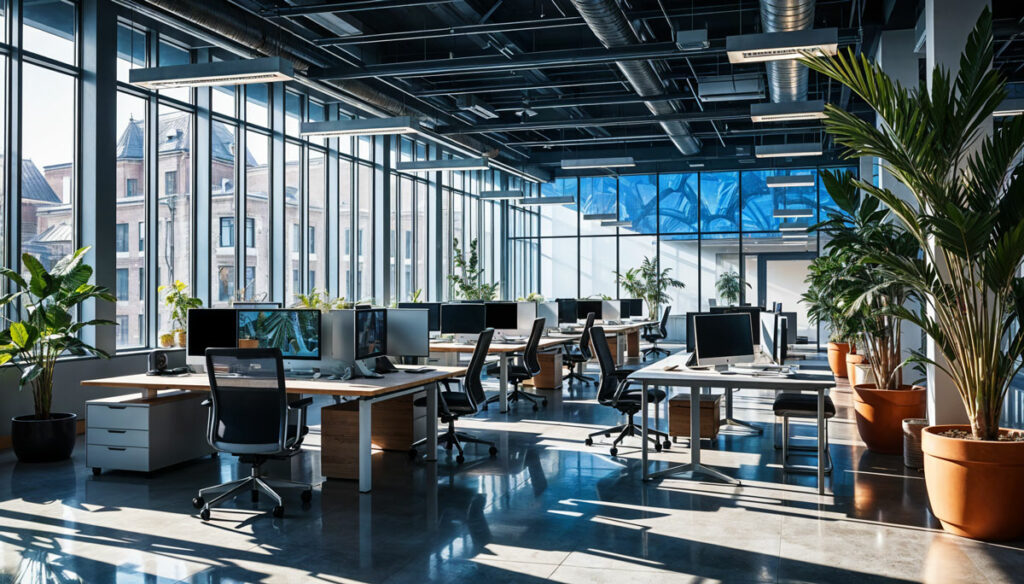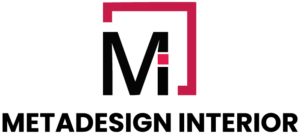Office Design Trends and Ideas
The modern workplace is ever-evolving, with office design ideas at the forefront of creating environments that boost productivity and foster innovation. As businesses strive to adapt to the changing needs of their workforce, they are incorporating flexible spaces that can support both collaborative work and individual focus. This shift reflects a broader trend towards creating more adaptable and inspiring workplaces that can accommodate a variety of work styles and activities.
Another key aspect of modern office design is the emphasis on employee well-being. Office fit-outs now regularly include ergonomic furniture, wellness areas, and even biophilic elements to enhance the physical and mental health of employees. The connection between a well-designed office and employee satisfaction and efficiency is stronger than ever, highlighting the importance of thoughtful office layout and design.
Technology also plays a crucial role in the modern office. Innovative solutions for hiding wire clutter and integrating tech seamlessly into the workspace not only enhance functionality but also contribute to a cleaner, more organized aesthetic. The rapid pace of technological advancement means that office designs must also be future-proof, capable of adapting to new tools and systems as they emerge.
Finally, sustainability is a growing priority. Eco-friendly materials, energy-efficient lighting, and designs that minimize waste are becoming standard practice. This shift not only benefits the environment but also aligns with the values of a workforce increasingly concerned with corporate responsibility towards ecological issues. Together, these trends and ideas are shaping the future of office design, creating spaces that are not only functional but also inspiring, sustainable, and conducive to well-being.
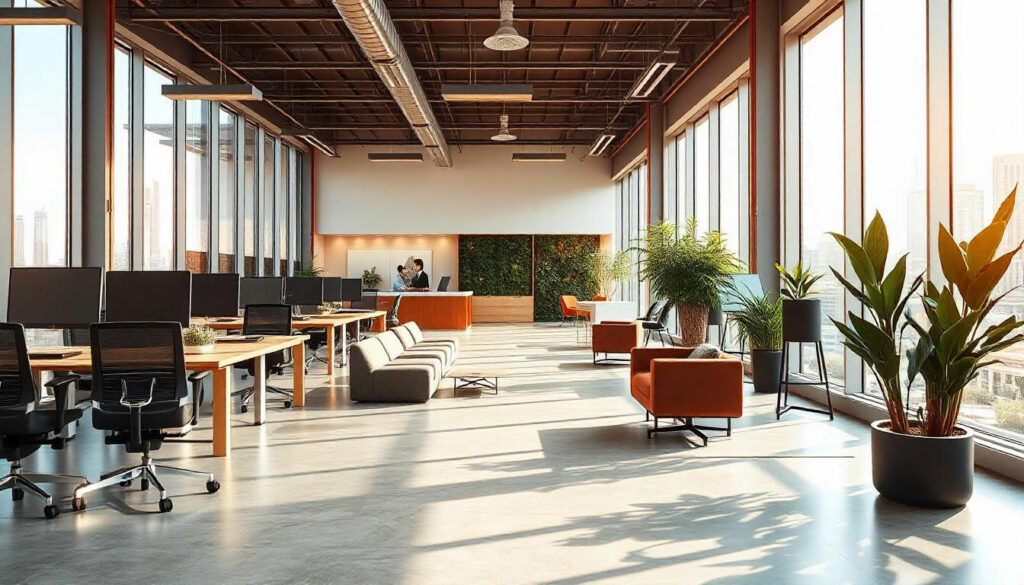
Crafting an Inviting Office Entrance
An inviting office entrance sets the tone for the entire workplace, signaling to employees and visitors alike the values and culture of the company. The design of the entrance area plays a crucial role in making that first impression, combining aesthetics with functionality to create a welcoming space. Elements such as comfortable seating, engaging art pieces, and clear signage can all contribute to a positive initial experience.
Lighting also plays a key role in the entrance design, with natural light sources often preferred for their ability to create a warm and inviting atmosphere. However, where natural light is not sufficient, carefully selected artificial lighting can enhance the space, making it feel more open and welcoming. The goal is to craft an entrance that not only reflects the company’s brand but also makes everyone who walks through the door feel valued and inspired.
First Impressions Matter
The importance of first impressions cannot be overstated in the context of an office entrance. This initial encounter with the workplace can influence perceptions of a company for employees, clients, and visitors. An entrance that is well-designed, with attention to detail and a clear display of the company’s identity, can instill confidence and establish a sense of professionalism.
Furthermore, the entrance is not just a passageway but an opportunity to communicate a company’s commitment to employee well-being and sustainability. Features like a living green wall or a showcase of sustainable practices can speak volumes. By prioritizing a design that aligns with these values, businesses can ensure that their first impression is both memorable and reflective of their ethos.
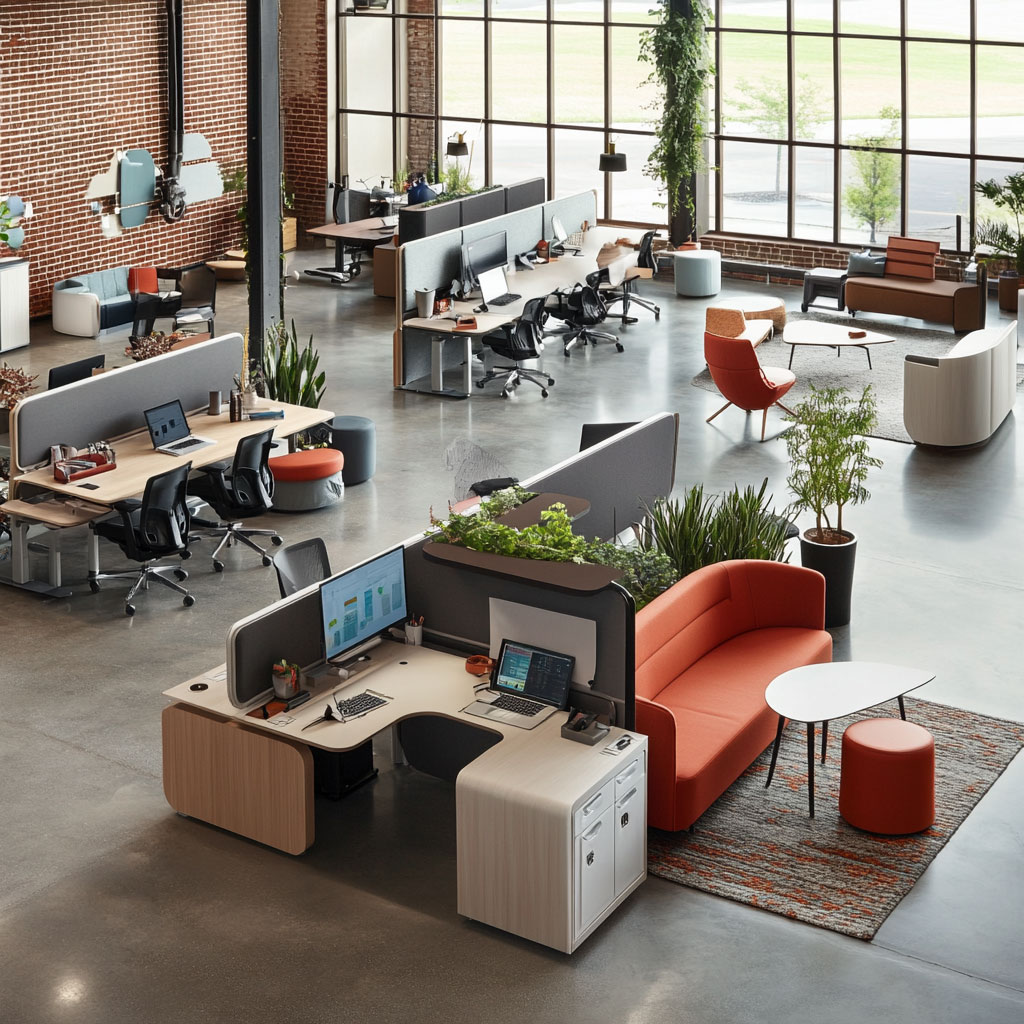
The Evolution of Office Spaces
Office spaces have undergone significant transformation over the years, moving from the rigid, cubicle-dominated layouts of the past to today’s dynamic environments. Current office design trends emphasize flexibility, collaboration, and a blend of work and leisure. This evolution reflects changing attitudes towards work-life balance and the recognition of the diverse needs of a modern workforce. As we continue to embrace these changes, the office as we know it is set to become an even more integral part of our daily lives and well-being.
Embracing Hybrid Workspaces for Flexibility
The rise of hybrid work models has necessitated a rethinking of traditional office spaces. Today, office spaces are designed to support a blend of in-office and remote work, providing employees with the flexibility to choose where and how they work best. This approach has led to the creation of multipurpose areas that can accommodate everything from individual work to team collaborations, reflecting a shift towards more adaptable and responsive workplace designs.
Design Studio vs. Corporate Office: A Comparative Analysis
In New York, the contrast between design studios and corporate offices highlights the diverse needs of different industries. Design studios often feature open, flexible layouts that encourage creativity and collaboration, with spaces that can be easily reconfigured for various projects. In contrast, corporate offices may prioritize more structured environments, with designated areas for teams and a focus on efficiency and privacy.
Despite these differences, both environments seek to enhance productivity and employee satisfaction through thoughtful design. Whether it’s the creative energy of a bustling design studio or the focused atmosphere of a corporate office, the underlying goal is to create a space that supports the work being done and the people doing it. In New York’s fast-paced environment, this adaptability and responsiveness to employee needs are key to attracting and retaining talent.
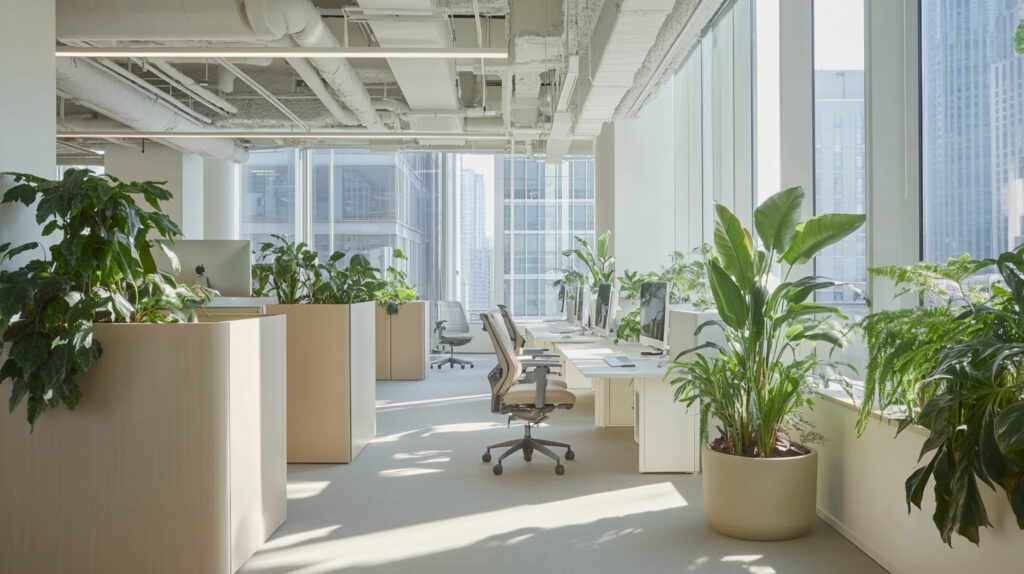
The Power of Natural Light in Boosting Productivity
Access to natural light within office spaces has been shown to have a significant impact on productivity and well-being. Space planning that maximizes natural light not only reduces the reliance on artificial lighting but also creates a more pleasant and healthier work environment. Studies have demonstrated that natural light can improve mood, energy levels, and even cognitive function, making it a critical element in modern office design.
Los Angeles Offices: A Case Study in Natural Illumination
Los Angeles offices serve as a prime example of how natural illumination can transform a workspace. With an abundance of sunny days, architects and designers in Los Angeles have mastered the art of bringing natural light deep into the office environment. Through strategic space planning and the use of reflective materials, they ensure that light penetrates even the most interior spaces, reducing the need for artificial lighting and creating a vibrant, energized workplace.
This attention to natural illumination not only enhances the aesthetic appeal of these offices but also contributes to a more sustainable approach to office design. By leveraging the natural resources available, Los Angeles offices not only improve the well-being of their occupants but also set a benchmark for eco-friendly design practices in urban environments.
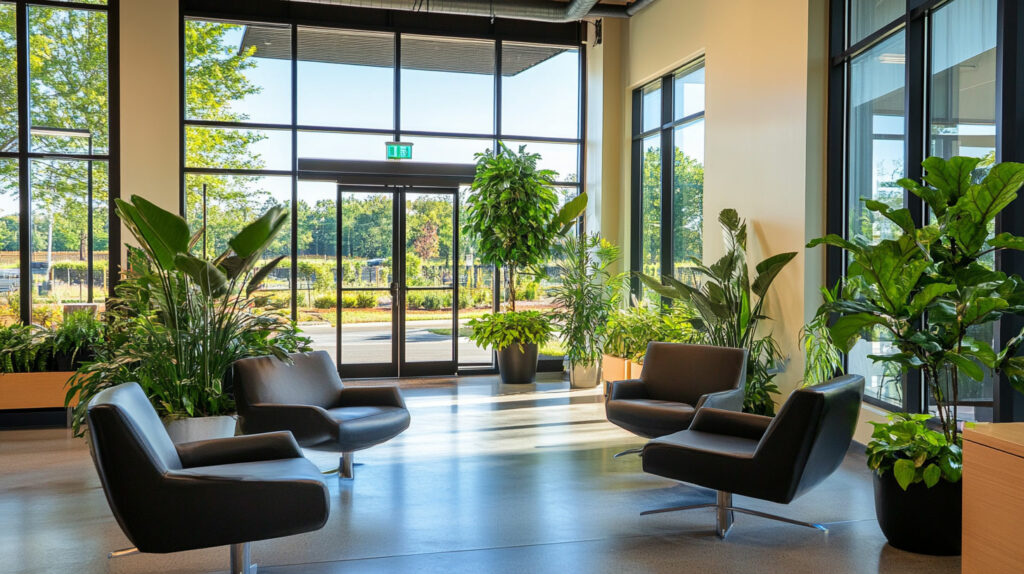
Fresh Air and Ventilation: Essentials for a Healthy Office Environment
In today’s bustling work environment, the significance of fresh air and proper ventilation cannot be overstated. These elements are crucial for not only maintaining a healthy office atmosphere but also for enhancing employees’ mental clarity and productivity. With the advent of modern architectural techniques, integrating efficient ventilation systems has become more seamless, ensuring that indoor air remains fresh and conducive to optimal work performance. Offices in New York, known for their dense urban setting, have particularly embraced these practices, showcasing how even in the most crowded cities, fresh air and ventilation can elevate the workspace.
Moreover, the approach to decorate the space plays a pivotal role in complementing the ventilation system. Strategic placement of plants and the use of natural materials can further purify the air, while also adding an aesthetic appeal to the office. This holistic view towards air quality not only underscores the practicality of fresh air and ventilation but also highlights how these elements are integral to designing modern, health-focused office environments.
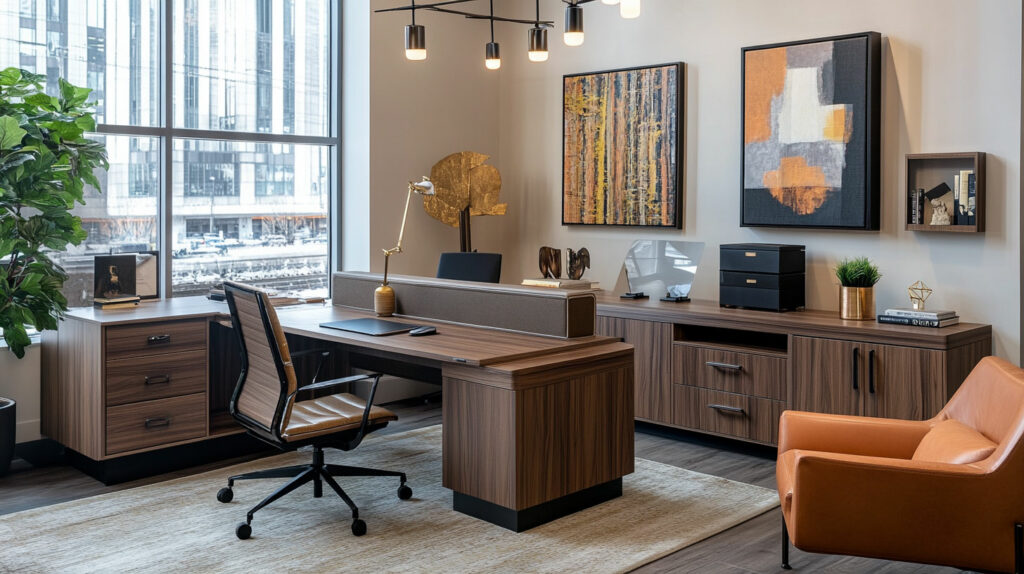
Functionality Meets Aesthetics
When considering office design, striking the perfect balance between functionality and aesthetics emerges as a key objective. This delicate equilibrium ensures that workspaces are not only efficient and conducive to productivity but also visually appealing and welcoming. It’s a philosophy that places equal importance on practical design elements and their visual counterparts, creating environments that inspire while serving the practical needs of daily operations.
Maximizing Office Space with Smart Design
In the heart of New York, where space is a premium, maximizing office space through smart design has become an art form. Designers are challenged to think creatively, using every square inch to its fullest potential without sacrificing style or comfort. Through innovative layouts and multifunctional furniture, these spaces are transformed into productive and attractive work environments. This approach not only addresses the constraints of urban office spaces but also sets a benchmark for efficiency and aesthetics in design.
Creative Solutions for Small Office Spaces in Urban Areas
The evolution of office design trends has ushered in a wave of creative solutions for small office spaces, particularly in urban areas. Designers are leveraging vertical space, implementing wall-mounted shelves and hanging planters to free up valuable floor space. This strategy not only enhances the functionality of small offices but also injects a dose of personality and vibrancy into the workspace. Compact, yet highly functional furniture pieces that can be easily rearranged or tucked away, play a crucial role in these designs, offering flexibility and promoting a clutter-free environment.
Moreover, the incorporation of glass partitions and open shelving units serves to visually expand these compact spaces, creating an illusion of openness while fostering a collaborative atmosphere. These design choices highlight how constraints can inspire innovation, leading to office environments that are both practical and aesthetically pleasing, embodying the latest in office design trends.
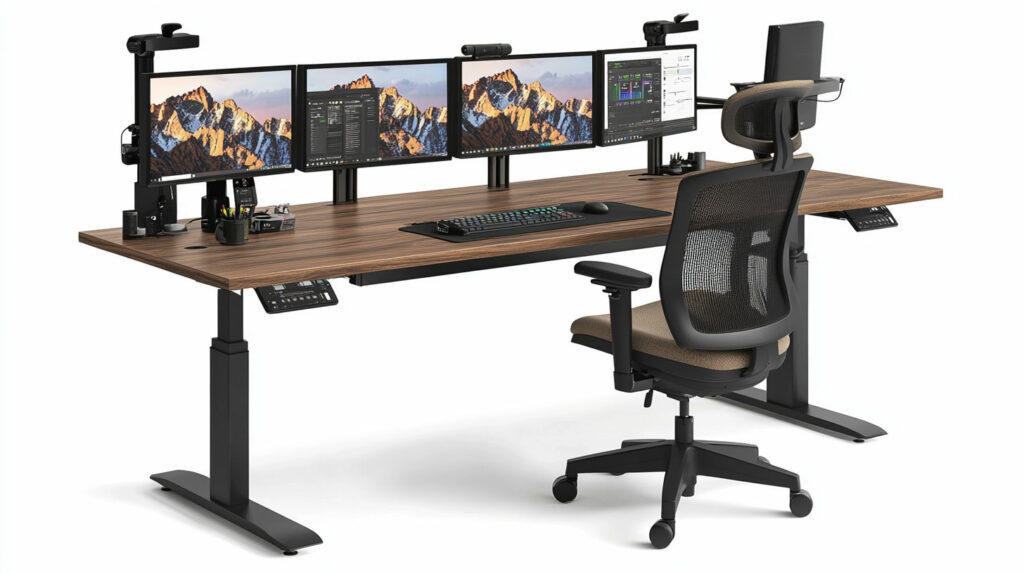
The Art of Ergonomics: Designing for Comfort and Productivity
Ergonomics, the science of designing the workplace to fit the user’s needs, has become a cornerstone of modern office design. It emphasizes the importance of creating environments that support the health and comfort of employees, thereby enhancing productivity. Through ergonomic chairs that provide proper back support to desks that encourage good posture, the focus is on minimizing strain and promoting well-being among workers.
Standing Desks and Adjustable Chairs: Must-Haves for Modern Offices
The trend towards more dynamic and flexible work environments has made standing desks and adjustable chairs essential elements of modern office design. These pieces of furniture cater to the natural movement of the human body, allowing employees to alternate between sitting and standing, thereby reducing the risk of sedentary lifestyle-related health issues. The concept borrows from the comfort and adaptability often found in the living room, bringing a sense of homeliness to the office while prioritizing health and productivity.
Furthermore, the inclusion of these ergonomic solutions reflects a broader commitment to employee wellness. By investing in adjustable chairs that cater to individual needs and standing desks that promote movement, businesses are signaling their dedication to creating workspaces that are not only functional but also supportive of physical health. This approach underlines the evolving nature of office design, where comfort and productivity go hand in hand.
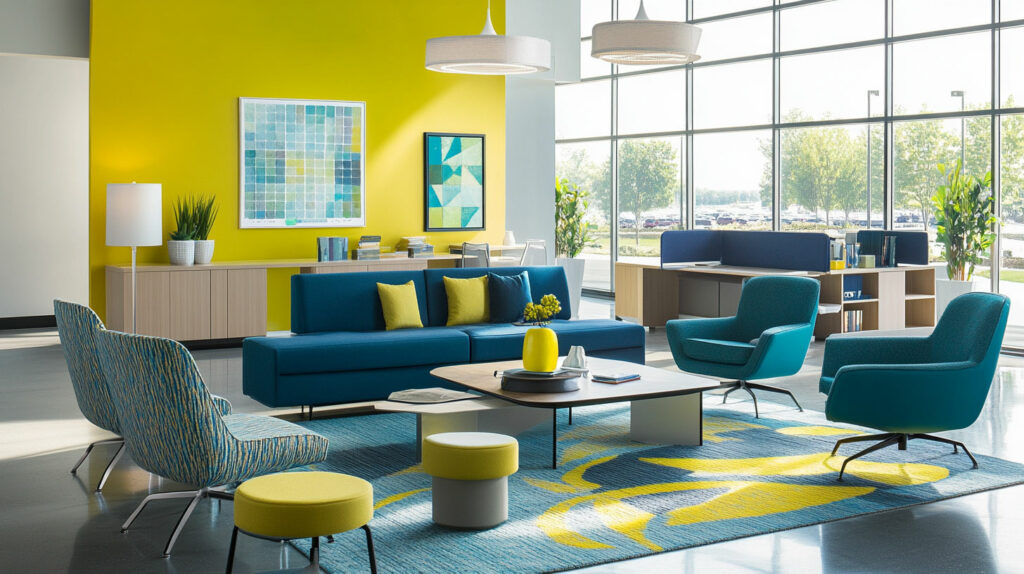
The Role of Color in Office Design
Color plays a transformative role in office design, influencing mood, productivity, and even team dynamics. By carefully selecting a palette that reflects the company’s culture and goals, designers can create spaces that inspire creativity and foster a positive work environment. From calming blues to energizing yellows, the strategic use of color can significantly impact the ambiance of an office, making it a critical consideration in the design process.
Inspiring Office Design: How Colors Influence Mood and Performance
The psychology behind color is a powerful tool in office design, guiding the selection of hues that can enhance focus, boost energy levels, and encourage collaboration. For instance, incorporating shades of green can promote a sense of balance and renewal, which is essential in high-stress environments. Similarly, the use of warmer tones can create a welcoming atmosphere, encouraging open communication and teamwork.
These office design ideas extend beyond mere aesthetics, serving as a strategic element that can positively affect employees’ mental states and performance. Through thoughtful color selection, designers can craft spaces that not only look visually appealing but also support the overall well-being and productivity of the workforce. This approach demonstrates how office fit-outs can be meticulously planned to align with psychological principles, ensuring that every design choice contributes to a harmonious and effective work environment.

Incorporating Nature and Wellness into Office Design
Integrating elements of nature and wellness into office design has become a priority for businesses seeking to enhance employee health and satisfaction. This trend, especially evident in New York’s progressive workspaces, reflects a growing recognition of the benefits associated with natural light, indoor plants, and open spaces that mimic the outdoors. By bringing the outdoors inside, offices not only become more aesthetically pleasing but also contribute to reduced stress levels, improved air quality, and overall better mental health among employees.
The commitment to wellness goes beyond physical health, encompassing mental and emotional well-being. Design strategies that encourage movement, offer quiet zones for contemplation, and promote social interactions are integral. These elements work together to create an environment that supports a holistic approach to employee wellness, proving that thoughtful office design can play a critical role in cultivating a happy, healthy, and productive workforce.
Indoor Plants and Green Spaces: Bringing the Outdoors Inside
Indoor plants and green spaces are essential components of modern office design, serving both aesthetic and functional purposes. They not only decorate the space, adding vibrant touches of nature, but also improve air quality and reduce stress levels among employees. This connection to nature within the workplace fosters a serene atmosphere, contributing to enhanced creativity and concentration.
The Benefits of Biophilic Design on Employee Wellbeing
Biophilic design, which incorporates natural elements into the built environment, has been shown to have a profound impact on employee wellbeing. Studies suggest that incorporating aspects of nature, such as indoor plants, water features, and natural light, can lead to significant improvements in mental health, including a reduction in stress and an increase in feelings of happiness and productivity. In workplaces that prioritize these elements, employees report higher levels of satisfaction and engagement.
The psychological benefits of connecting with nature are well-documented, with research indicating that even small touches of greenery can enhance cognitive function and foster a more positive outlook. By integrating these principles into office design, companies can create spaces that not only promote physical health through improved air quality but also offer a sanctuary for mental rejuvenation. This holistic approach to wellness in the workplace underscores the importance of considering both the physical and emotional needs of employees in office design.
Designing for Workplace Wellness: Ideas to Promote Health
Creating a healthy office environment goes beyond just physical health; it extends to mental health as well. By incorporating elements like ergonomic furniture, spaces for relaxation, and mindfulness areas, offices can become a place where wellness is a priority. These features not only reduce stress but also enhance employee satisfaction and productivity. Furthermore, providing resources and programs focused on mental health, such as workshops or access to counseling services, reinforces an organization’s commitment to its employees’ overall well-being.
Another significant aspect of designing for workplace wellness involves the layout of the office itself. Open spaces that encourage movement, private areas for focused work, and communal areas for social interactions can all contribute to a healthier work environment. Natural light, plants, and visually appealing designs can boost morale and foster a positive, engaging atmosphere. By thoughtfully designing office spaces with health and wellness in mind, companies can support their employees in achieving a better work-life balance.
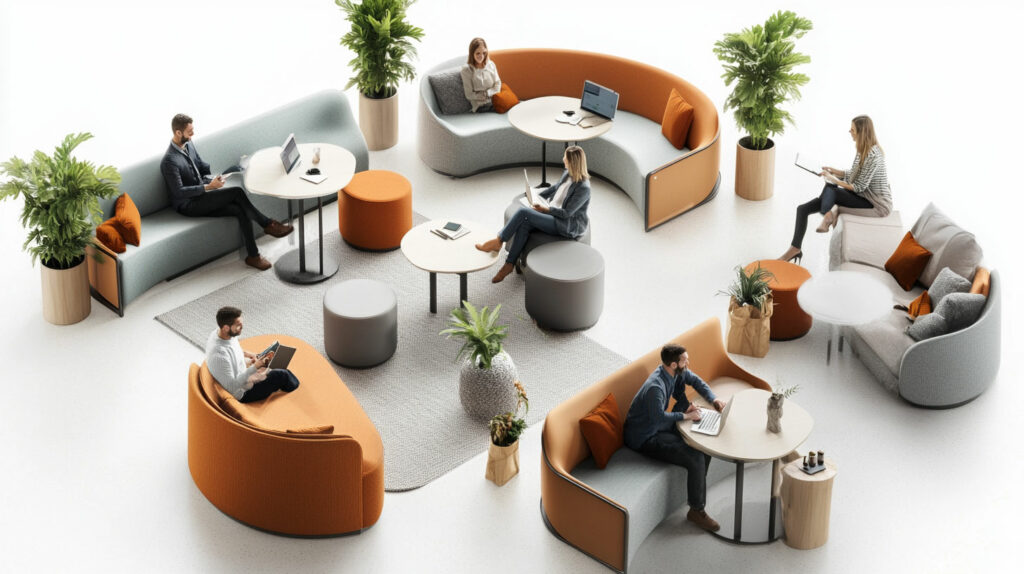
Enhancing Collaboration and Community
At the heart of a thriving office culture lies the design of its spaces, particularly how they facilitate collaboration and foster a sense of community. Strategic placement of a reception desk, for instance, can set the tone for an inviting workspace where every individual feels valued and part of the team. Offices designed with open areas and comfortable meeting spaces encourage spontaneous interactions and teamwork, strengthening the bonds between colleagues and enhancing the overall community spirit within the workplace.
Multipurpose Workspaces: Adaptable Areas for Hybrid Work
In today’s dynamic work environment, multipurpose office spaces and flexible workspaces have become essential. These areas, equipped with movable furniture and adaptable design elements, can seamlessly transition from individual workstations to collaborative hubs, accommodating a variety of work styles and activities. This flexibility not only maximizes the use of space but also supports a hybrid work model, allowing employees to choose how and where they work best within the office.
Designing for Collaboration: Furniture and Layout Ideas
Designing for collaboration involves more than just arranging furniture; it’s about creating environments that inspire teamwork and innovation. Round tables, for instance, promote equality and open dialogue, while modular seating can be rearranged to suit the needs of different teams and projects. Furthermore, incorporating technology-friendly surfaces and ample power outlets ensures that teams can stay connected and productive. These design choices contribute to a dynamic and adaptable workspace that encourages creative collaboration.
Equally important is the inclusion of informal meeting areas within the office layout. These less structured spaces, often equipped with comfortable seating and a relaxed atmosphere, invite casual interactions and brainstorming sessions. They provide a change of scenery from the traditional desk setting, stimulating creativity and fostering a sense of community among team members. By thoughtfully integrating these areas into the office design, companies can create a conducive environment for collaboration and innovation.
Community Focused Areas: Creating Spaces for Social Interaction
Community-focused areas within the office serve as vital spaces for social interaction, contributing to a cohesive and connected workplace culture. These areas, designed with comfort and accessibility in mind, encourage employees to step away from their desks, share ideas, and engage in informal conversations. The presence of such spaces not only enhances collaboration but also strengthens the social fabric of the workplace, making it a more enjoyable and supportive environment for everyone.
Lounge Areas: Fostering a Sense of Belonging Among Teams
Lounge areas in offices are more than just places to take a break; they are essential for fostering a sense of belonging among teams. With comfortable seating, ambient lighting, and aesthetically pleasing décor, these spaces invite employees to relax and connect with their colleagues on a personal level. By offering a setting that contrasts with the traditional office environment, lounge areas help to break down barriers and cultivate a culture of openness and camaraderie.
Moreover, when lounge areas are strategically incorporated into office designs, they serve as communal hubs where spontaneous interactions can flourish. Events such as casual meetings, coffee breaks, and team celebrations in these areas further enhance team bonding and contribute to a positive workplace atmosphere. Creating lounge areas that reflect the company’s culture and values can significantly impact employees’ sense of belonging and overall job satisfaction.
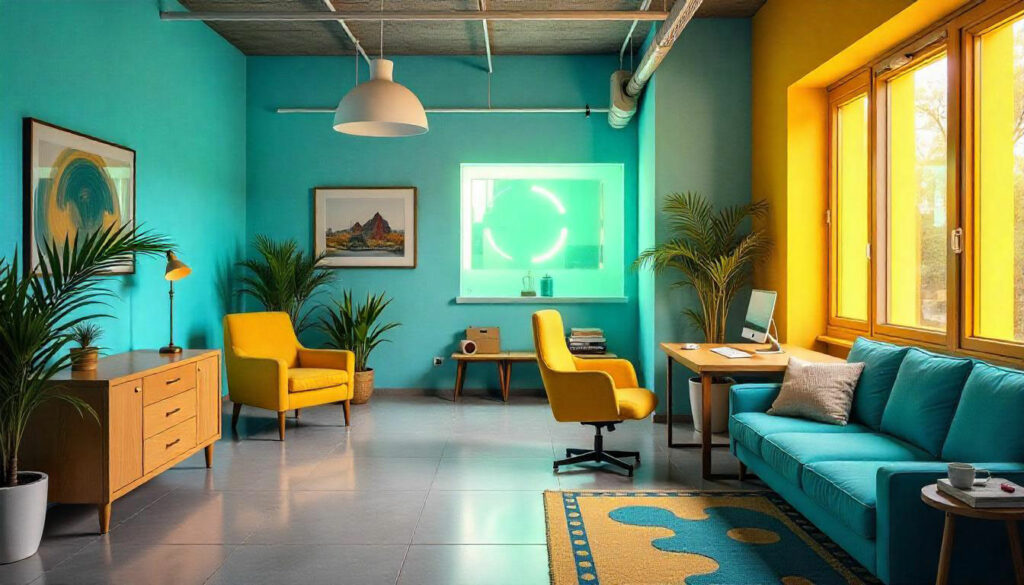
Decor and Personalization in the Workplace
Incorporating personal touches and thoughtful decor into the workplace can have a profound impact on employee morale and mental health. Allowing employees to personalize their workspace with photos, plants, or small keepsakes can make them feel more comfortable and connected to their environment. This sense of personal space within the office can reduce stress and increase productivity, as employees feel more at home in their work setting.
Moreover, integrating art and other decorative elements throughout the office not only enhances the aesthetic appeal but also stimulates creativity and inspiration. Curated art collections, inspirational quotes, and unique decor can transform mundane office spaces into vibrant and engaging environments. These elements, when thoughtfully chosen to reflect the company’s identity and values, can foster a sense of pride and belonging among employees, further contributing to a positive and health-focused workplace culture.
Artwork in the Workplace: A Touch of Creativity and Inspiration
Integrating artwork into the workplace is a powerful way to inspire creativity and boost mental health. Art pieces, whether they are vibrant paintings, thought-provoking sculptures, or local artisan crafts, add a layer of visual interest and can evoke positive emotions among employees. This creative touch not only beautifies the workspace but also encourages employees to think differently and approach problems with a fresh perspective, fostering an innovative and mentally stimulating work environment.
Gallery Walls and Statement Pieces: Personalizing Office Spaces
Gallery walls and statement pieces have the unique ability to transform office spaces into galleries of inspiration and reflection. In bustling cities like New York, these artistic features can provide a much-needed visual escape, offering moments of tranquility amidst the fast-paced workday. Curating a selection of artworks that resonate with the company’s mission and values can create a sense of identity and pride within the office. This personalized approach to decor not only enhances the aesthetics of the workplace but also supports a culture of creativity and innovation.
Furthermore, incorporating statement pieces such as bold sculptures or interactive installations can spark conversation and encourage employees to engage with their surroundings in new and meaningful ways. These dynamic elements of design not only contribute to the visual appeal of the office but also promote a sense of curiosity and openness among employees. By carefully selecting and positioning these pieces, companies can craft a distinctive and stimulating environment that reflects the uniqueness of their brand and the creativity of their team.
Unique Office Features: Standout Desks and Bold Bookshelves
Innovative office design often includes unique features that catch the eye and serve a purpose. Standout desks, for example, are not just workspaces but statements of style and functionality. They can be custom-made to fit the specific needs of the employees, incorporating ergonomic designs that enhance productivity and comfort. Bold bookshelves, on the other hand, offer both storage solutions and aesthetic appeal. They can be designed to showcase company achievements, literature, and decorative items, making the office environment more inviting and inspiring.
Personalizing these features can reflect the company’s culture and values. For instance, a tech company might opt for modern, minimalist desks with built-in tech capabilities, while a creative agency might choose eclectic bookshelves that display a mix of professional and personal items. This customization not only enhances the workspace visually but also boosts morale and fosters a sense of belonging among employees. By carefully considering the design of desks and bookshelves, offices can create a distinctive environment that encourages creativity and productivity.
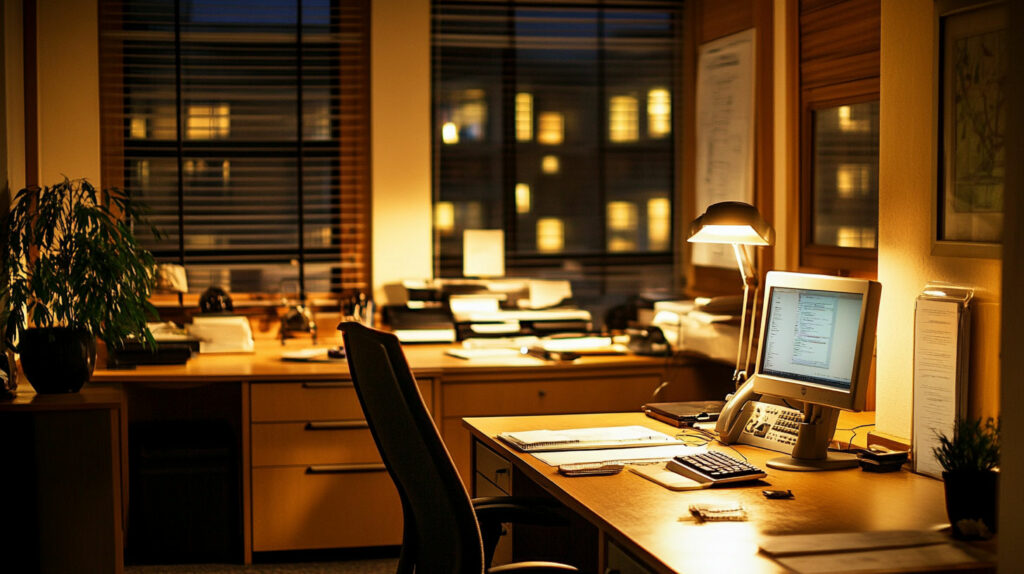
Lighting and Atmosphere
Lighting plays a crucial role in creating a vibrant office environment. Balancing artificial and natural light ensures that spaces are well-illuminated without being harsh on the eyes. Space planning is essential to maximize access to natural light, which can boost mood and productivity. Office spaces designed with large windows and skylights allow sunlight to permeate the workspace, reducing the need for artificial lighting during the day. This not only saves energy but also creates a more comfortable and healthier work environment.
Artificial lighting should complement natural light, with LED lights often preferred for their efficiency and the soft, adjustable illumination they provide. The layout of lighting fixtures should be strategic, ensuring that every area of the office is adequately lit, from individual workstations to communal areas. Proper lighting design can transform the atmosphere of an office, making it feel more spacious, welcoming, and conducive to work.
Balancing Artificial and Natural Light for a Vibrant Office Environment
Creating a vibrant office environment requires a thoughtful balance between artificial and natural light. Access to natural light is prioritized in modern office design, as it has been shown to enhance employee well-being and productivity. Strategic space planning allows for the maximization of natural light, positioning workspaces near windows or under skylights to benefit from daylight. This not only improves the mood and health of employees but also contributes to energy savings by reducing the reliance on artificial lighting.
However, artificial lighting is still necessary, especially in areas where natural light cannot reach or during times of the day when it is insufficient. The key is to use artificial lighting that mimics the qualities of natural light, with options like LED lights that offer a range of color temperatures. Task lighting can be employed at individual workstations, while ambient lighting can enhance the overall atmosphere of the office. The goal is to create a harmonious lighting environment that supports various work activities and enhances the office’s aesthetic appeal.
Mood Lighting and Task Lighting: Setting the Right Tone for Work
Mood lighting and task lighting are essential components of a well-designed office. Mood lighting helps set the overall tone of the work environment, promoting a calm and focused atmosphere. It can be achieved through strategic placement of ambient lighting fixtures that cast a soft, diffuse light throughout the office. This type of lighting is particularly important in creative spaces, where a relaxed environment can stimulate innovation and creativity.
Task lighting, on the other hand, is more focused, providing bright office workers with the illumination they need to perform specific tasks without straining their eyes. Desk lamps and under-cabinet lights are common examples of task lighting. They can be adjusted according to individual needs, ensuring that each employee has the right amount of light to work comfortably. By combining mood and task lighting, offices can cater to the diverse needs of their workforce, creating a flexible and productivity-enhancing environment.

Technology and Innovation in Office Design
In the bustling city of New York, technology and innovation are at the forefront of office design. The integration of cutting-edge technology into the workplace not only enhances productivity but also fosters a culture of innovation. Smart offices equipped with the latest gadgets and connectivity solutions streamline operations and facilitate seamless communication among teams. From wireless charging stations to advanced video conferencing systems, technology empowers employees to work more efficiently and collaboratively.
Moreover, New York’s emphasis on innovation extends to sustainable office designs that leverage technology for eco-friendly solutions. Automated lighting systems, energy-efficient appliances, and smart climate controls contribute to reducing the office’s carbon footprint while ensuring a comfortable working environment. This forward-thinking approach not only appeals to environmentally conscious employees but also positions companies as leaders in corporate responsibility and innovation.
Hiding Wire Clutter for a Sleek Look
In today’s tech-heavy office environments, managing wire clutter is essential for maintaining a sleek and professional look. Innovative solutions, such as integrated cable management systems and wireless technologies, help keep desks tidy and free from tangles. By concealing wires within furniture or under flooring, offices can achieve a minimalist aesthetic that enhances concentration and reduces visual stress. This attention to detail reflects a company’s commitment to efficiency and a positive workplace experience.
Tech-Friendly Spaces: Integrating Technology Seamlessly into Design
The integration of technology into office design is not just about adding gadgets; it’s about creating spaces that enhance the user experience. In New York, where space is at a premium, designing tech-friendly spaces means making smart choices about furniture and layout. Desks with built-in power outlets and USB ports, along with wireless charging surfaces, allow for easy access to power without the clutter. Meeting rooms equipped with high-definition screens and video conferencing capabilities facilitate global collaboration.
Furthermore, technology is used to improve the office environment itself. Automated window shades adjust to optimize natural light, while smart thermostats maintain a comfortable temperature. These technological enhancements not only improve functionality but also contribute to a well-designed space that promotes well-being and productivity. By thoughtfully integrating technology, offices can offer their employees a seamless and efficient work experience that supports innovation and creativity.
Future-Proofing the Office: Accommodating New Technologies
As we step into an era where technology evolves at lightning speed, offices must adapt to accommodate these changes. Future-proofing an office goes beyond just hiding wire clutter; it involves creating spaces that can easily integrate new technologies as they emerge. This means designing offices with flexible layouts where infrastructure can be updated without major renovations. The goal is to ensure that the integration of future technologies enhances productivity without disrupting the existing office environment.
To decorate the space for future needs, designers must think ahead about the types of technologies that might enter the office landscape. This includes considering smart office technologies, like automated lighting and temperature controls, which can improve energy efficiency and employee comfort. It also means preparing for the next wave of communication tools, ensuring that offices can support increased bandwidth and wireless connectivity. By anticipating these changes, offices can remain at the forefront of innovation, attracting top talent and staying competitive.
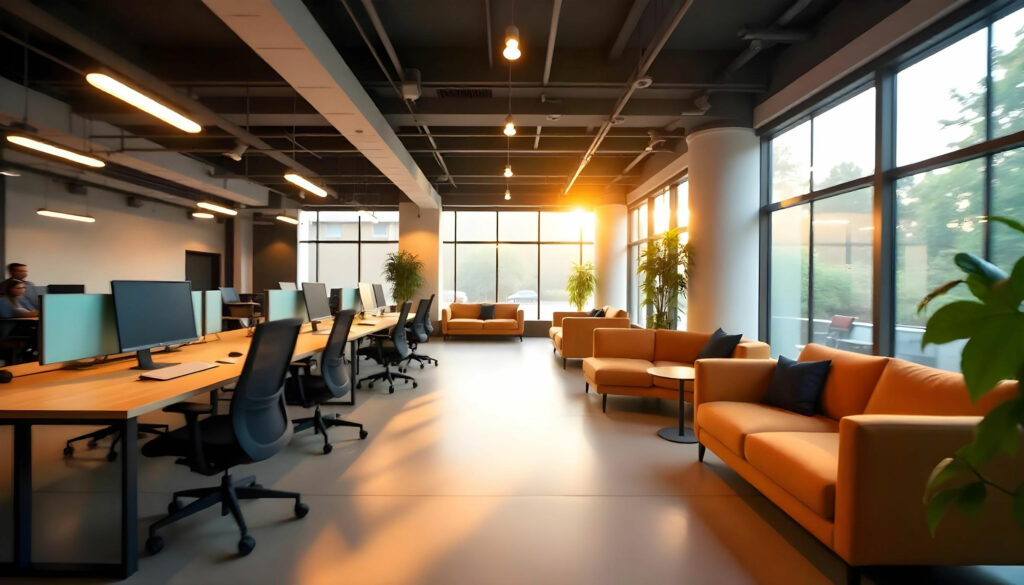
Strategic Office Design for Different Sectors
Different sectors have unique needs when it comes to office design. A tech startup might prioritize open spaces for collaboration and brainstorming, while a law firm may require private offices that ensure client confidentiality. Understanding these sector-specific requirements is crucial in creating an environment that supports the work being done. This means not only tailoring the physical space but also considering how the design influences the workflow, employee interaction, and overall productivity of a business.
Moreover, sustainability and employee well-being are becoming increasingly important across all sectors. This translates into a need for designs that include natural light, incorporate green spaces, and use materials that are both durable and environmentally friendly. Offices designed with these elements in mind can boost morale, reduce sick days, and attract a workforce that values sustainability and health, thereby supporting the company’s bottom line and its reputation in the industry.
Design Studio vs. Traditional Office: Tailoring Spaces According to Industry Needs
Design studios and traditional offices serve vastly different purposes and thus require unique design approaches. For design studios, the emphasis is often on creating a dynamic and inspiring environment that fosters creativity. This might include open layouts with flexible workstations, areas for collaboration, and spaces for relaxation and inspiration. In contrast, traditional offices might focus more on functionality and privacy, with a layout that includes individual offices and meeting rooms. The key is understanding the core activities of each sector to create an environment that enhances productivity and job satisfaction.
Los Angeles Creative Spaces: A Look into Innovative Office Design
Los Angeles, known for its innovation and creativity, offers a glimpse into the future of office design. Creative spaces in this city break from the traditional mold, integrating elements that stimulate creativity and encourage collaboration. For example, many offices incorporate art installations, unconventional furniture, and open spaces that can be reconfigured for different purposes. These design choices reflect a deep understanding of how the physical environment can influence creativity and collaboration, making Los Angeles a beacon for forward-thinking office design.
Additionally, many Los Angeles offices are adopting eco-friendly design principles, recognizing the importance of sustainability in the modern workplace. This includes using recycled materials, maximizing natural light, and integrating indoor plants to improve air quality. These features not only contribute to the health and well-being of employees but also signal a company’s commitment to environmental stewardship. As more businesses look to Los Angeles for inspiration, we can expect to see these innovative and sustainable design elements become more prevalent in offices worldwide.
Hybrid Workspaces: The Bridge between Home and Office for Various Industries
Hybrid workspaces have emerged as a vital bridge, blending the comfort of home with the professional environment of the office. These spaces are designed with flexibility in mind, allowing employees to choose where and how they work best. Key design elements include adaptable furniture and technology that supports both individual and collaborative work. This adaptability is particularly beneficial for industries ranging from tech to finance, where the nature of work can vary greatly from one role to the next.
In many ways, a well-designed hybrid workspace resembles a modern design studio, where creativity and productivity flourish side by side. Such spaces encourage a balance between focused work and collaborative projects, with areas designated for quiet thought and others for dynamic team engagement. This blend of environments caters to diverse work styles and preferences, making hybrid workspaces a universally appealing solution across various sectors.

Global Influences on Office Design
Office design has increasingly become a global conversation, with ideas and innovations crossing borders to inspire workplaces around the world. Los Angeles, with its blend of creativity and commerce, often looks beyond its skyline to international trends for inspiration. This global exchange of design philosophies enriches local office environments, bringing in fresh perspectives and solutions that cater to an evolving workforce.
Mediterranean and Scandinavian influences, for example, have introduced a focus on natural light, open spaces, and a connection to the outdoors, all of which contribute to a healthier and more inviting office atmosphere. These global trends are reshaping office design in Los Angeles and beyond, creating spaces that support well-being and productivity.
Singapore and Beyond: How International Trends Influence Local Designs
In Singapore, office designs are increasingly influenced by international trends, blending global aesthetics with local sensibilities. For instance, the integration of biophilic design—emphasizing natural elements like greenery and natural light—has gained prominence, reflecting a global shift towards creating healthier and more inspiring work environments.
Additionally, the adoption of flexible and dynamic layouts, inspired by international practices, caters to the evolving needs of modern workforces, promoting collaboration and adaptability.
This fusion of global design principles with Singapore’s unique cultural context results in office spaces that are both aesthetically pleasing and functionally effective, fostering creativity and innovation.
Mediterranean and Scandinavian Influences in Modern Office Spaces
Mediterranean design introduces warmth and light, with open spaces that promote communication and collaboration. Scandinavian design contributes clean lines and a minimalist approach that emphasizes functionality and efficiency. Together, these influences encourage a workplace that feels both inviting and productive, with a focus on well-being. Indoor plants, natural materials, and ample daylight are common features, creating an environment where employees feel relaxed and motivated.
The incorporation of these international design elements into modern office spaces reflects a broader trend towards workplaces that are not just places to work but are also designed to enhance employee well-being. The balanced use of color, material, and light, inspired by Mediterranean and Scandinavian aesthetics, contributes to spaces that are not only beautiful but also support health and happiness at work.
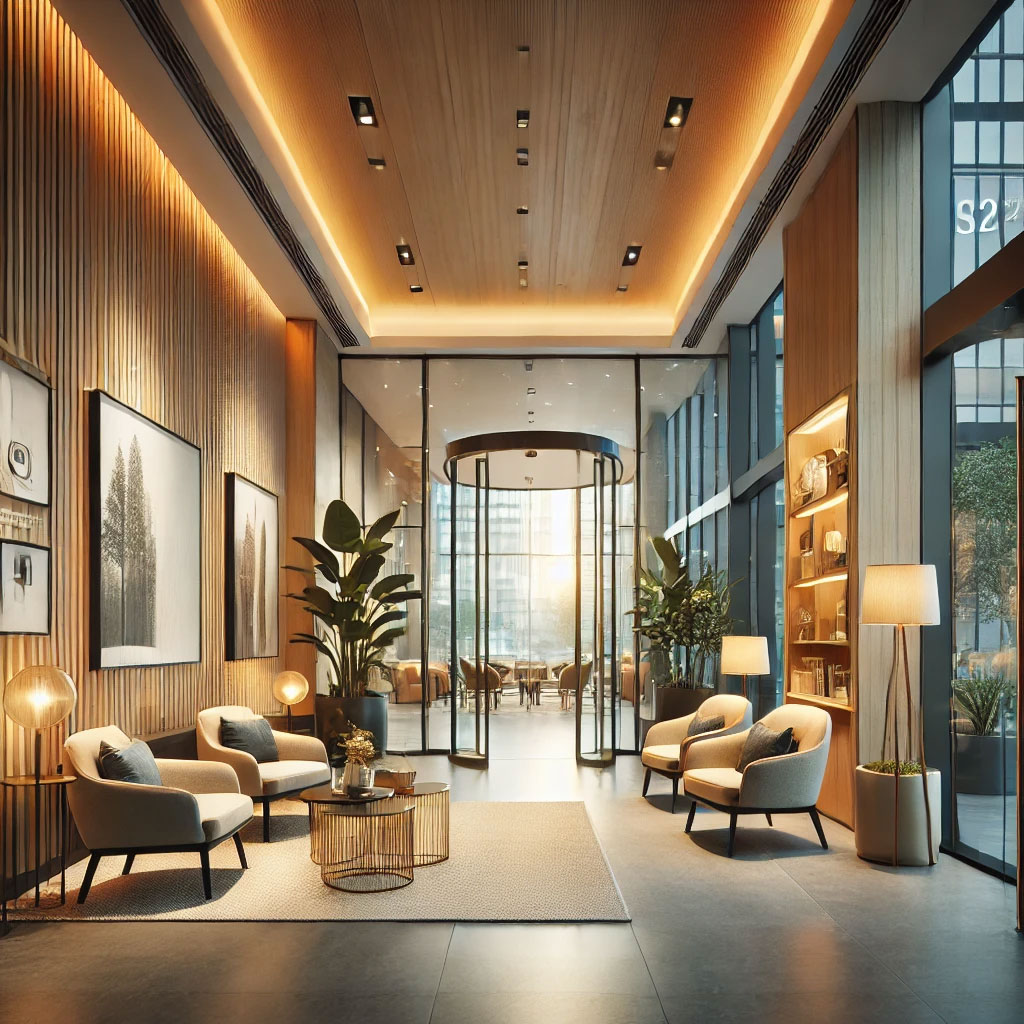
Conclusion: The Future of Office Design
The future of office design lies in creating spaces that are flexible, adaptable, and focused on the well-being of their occupants. Visionaries like Florence Knoll have shown us that furniture and office interior design play crucial roles in shaping company culture and employee productivity. The trend towards well-designed office spaces that prioritize comfort, flexibility, and a connection to nature is set to continue, with a growing emphasis on sustainable materials and practices.
As we look ahead, the integration of technology will further transform office environments, making them smarter and more responsive to the needs of their users. Future-proofing office spaces to accommodate evolving technologies while maintaining a focus on human-centric design will be key. The goal will be to create environments that inspire creativity, foster community, and support the ever-changing dynamics of the modern workplace.
Embracing Change and Innovation for Inspiring Office Environments
In Singapore, the drive for inspiring office environments aligns with global trends that emphasize adaptability, innovation, and sustainability. Similar to tech hubs around the world, Singapore’s workspaces are evolving to incorporate flexible layouts, natural elements, and ergonomic designs that foster productivity and well-being. This isn’t just about following trends—it’s about recognizing how a thoughtfully designed workspace can positively influence employee satisfaction, health, and overall productivity.
As companies across Singapore embrace designs that are adaptable and ecologically responsible, they are setting a new standard for workspaces that support both current needs and future growth. At MetaDesign Interior, we blend global influences with classic elements to create timeless, functional spaces. Visit our website to learn more about our approach, get office design tips, or reach out for expert guidance on transforming your workspace. Embrace the future of office design with a partner who values both tradition and innovation.

